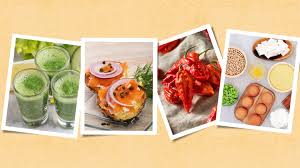A Deep Dive into the Best Food Trends in Pakistan
Pakistan’s culinary landscape is a vibrant tapestry woven from centuries of tradition, regional diversity, and a fearless spirit of innovation. From the aromatic lanes of Lahore’s bazaars to the coastal delights of Karachi’s waterfront stalls, a new wave of chefs, street vendors, and home cooks is redefining how Pakistanis—and visitors—experience local flavors. In one notable feature, the Best Pakistani Magazine celebrated this movement as “a delicious testament to our inventiveness.” In this deep dive, we will explore eight key trends that are propelling Pakistan’s food scene into an exciting future.
1. Elevation of Street Food
Street food has always formed the heartbeat of Pakistani eating culture, yet today’s market stalls are becoming culinary stages. Traditional snacks like chaat and samosas now feature gourmet twists: crispy pani puris filled with tangy beetroot-mint agua, tengra (tiny fish) fritters dusted with zesty herbs, and artisanal kebabs combining lamb with exotic spices like sumac and nigella. These vendors blend time-honored recipes with modern presentation techniques—serving dishes on banana leaves or in artisanal clay bowls. The result is a fusion of nostalgia and novelty that draws both long-time patrons and adventurous newcomers back to bustling street corners.
2. Cross-Cultural Fusion Creations
Global flavors are converging with local spices to produce inspired fusion dishes. In trendy cafes, naan-based flatbreads are transformed into pizza canvases layered with tandoori chicken, spiced tomato chutney, and cooling yogurt drizzle. Biryani-inspired arancini—Italian risotto balls infused with fragrant basmati rice, peas, and tender meat—offer a playful take on two culinary traditions. Even tacos have gone desi, filled with tangy karahi chicken, onion-tomato salsa, and a mint-infused chutney that cuts through the richness. These inventive mashups respect Pakistan’s spice heritage while inviting diners to savor familiar tastes in entirely new contexts.
3. Reinvention of Classics
Time-honored comfort dishes are receiving elegant makeovers. White rice pulao is being reinvented with brown rice or ancient grains like quinoa, studded with dried fruits and toasted nuts to add texture and a nutritional boost. Nihari—Pakistan’s iconic slow-cooked beef stew—is deconstructed into bite-sized sliders paired with rich jus shots, transforming a communal hangover cure into a sophisticated appetizer. Kheer, the region’s beloved milk-and-rice pudding, has been layered into parfaits alongside saffron-scented sponge cake and candied pistachios, offering Instagram-worthy presentations without sacrificing the soul of the original dessert.
4. Health-Forward and Plant-Based Innovations
A growing wellness movement has sparked a surge in health-focused menus across urban centers. Plant-based karahi dishes, crafted from jackfruit or textured soy, replicate the complex spice profiles of their meat equivalents. Smoothie bowls brightened with moringa, turmeric-ginger tonics, and overnight oats topped with seasonal fruits cater to those seeking functional nutrition. Probiotic-rich lassi variations and homemade ferments—such as tangy fenugreek chutneys and kombucha infused with local chilies—are gaining popularity as gut-friendly complements to heavier meals. This shift highlights a desire for dishes that deliver both taste and tangible health benefits.
5. Artisanal Beverages and Specialty Sips
Pakistan’s beverage scene has matured beyond simple chai and sugarcane juice to include a portfolio of craft drinks. Cold-pressed juices now blend fresh sugarcane with hints of ginger or mint and are served in recyclable glass bottles. Specialty coffee bars champion single-origin beans roasted locally and brewed through pour-over, French press, or AeroPress methods. Non-alcoholic mocktails have evolved into multilayered creations featuring ingredients like basil seeds, saffron syrup, and tamarind concentrate—demonstrating that complex, café-quality beverages can thrive without alcohol. These artisanal sips offer refreshing counterpoints to rich street foods and heavy mains.
6. Digital-First Dining and Ghost Kitchens
The rise of delivery apps and cloud kitchens has opened doors for culinary entrepreneurs to launch virtual-only brands. Chefs experiment with niche concepts—loaded paratha pizzas, biryani burritos, and kaleidoscopic smoothie bowls—before deciding whether to expand into physical locations. Subscription-based meal boxes deliver curated thali experiences to busy households, featuring rotating menus of regional specialties. Interactive live-cook sessions on social media platforms invite home cooks to follow along in real time, turning mealtime into a communal event. This digital-first approach allows for rapid iteration, customer feedback integration, and minimized overhead costs.
7. Festivals, Pop-Ups, and Collaborative Events
Food festivals across Lahore, Islamabad, and Karachi now draw thousands of attendees eager to sample the latest innovations. Themed pavilions showcase everything from “Street Classics” to “Plant-Powered Wonders,” spotlighting both legacy vendors and emerging talent. Cross-border chef exchanges bring in culinary masters from neighboring countries to co-create fusion menus, celebrating shared regional heritage and fostering creative dialogue. Farm-to-fork pop-ups, hosted in heritage farms or rooftop gardens, highlight hyper-local ingredients—heirloom grains, organic eggs, hand-picked herbs—offering diners an immersive experience that connects them to the source of their meal.
8. Storytelling Through Food
Today’s diners crave narratives as much as flavors. Menus increasingly include brief histories of dishes, tracing the journey of popular snacks from old city quarters to contemporary tables. Restaurant social media accounts document the sourcing process, from spice procurement in historic bazaars to interviews with local farmers and artisans. Short documentary videos profile home cooks preserving ancestral recipes and street-food legends whose stalls have become cultural institutions. By weaving these stories into the dining experience, chefs and restaurateurs turn each meal into an immersive cultural exploration.
Pakistan’s food revolution is defined by respect for heritage, a passion for flavor, and an unwavering openness to change. From gourmet street stalls serving up elevated chaat to sleek, digital-only brands crafting avant-garde fusion dishes, the nation’s culinary scene has never been more dynamic. As chefs, entrepreneurs, and home cooks push boundaries—experimenting with plant-based adaptations of classics, pioneering craft beverages, and leveraging digital platforms—the world is taking notice.
Embark on your own gastronomic journey by exploring local markets, dining at innovative pop-ups, or subscribing to a cloud-kitchen meal plan. Whether you’re savoring a deconstructed nihari slider in Lahore, sipping a turmeric-ginger tonic in Islamabad, or indulging in a quinoa pulao parfait in Karachi, each bite offers a fresh perspective on tradition infused with modern creativity.
Pakistan’s culinary narrative is far from static. It continues to evolve as new voices emerge, regional ingredients shine, and the boundaries between home cooking and professional kitchens grow ever more fluid. In every corner of the country, food trends are being written and rewritten—celebrating the flavors of the past while heralding the tastes of tomorrow. The adventure awaits; savor each trend, explore every dish, and let Pakistan’s rich culinary tapestry delight your senses and inspire your palate.













